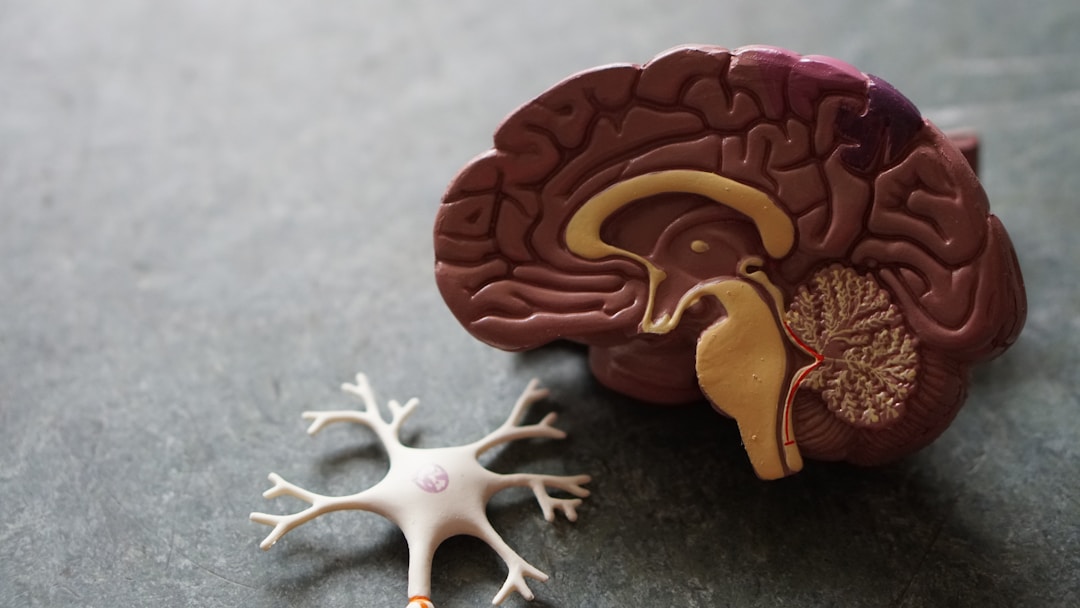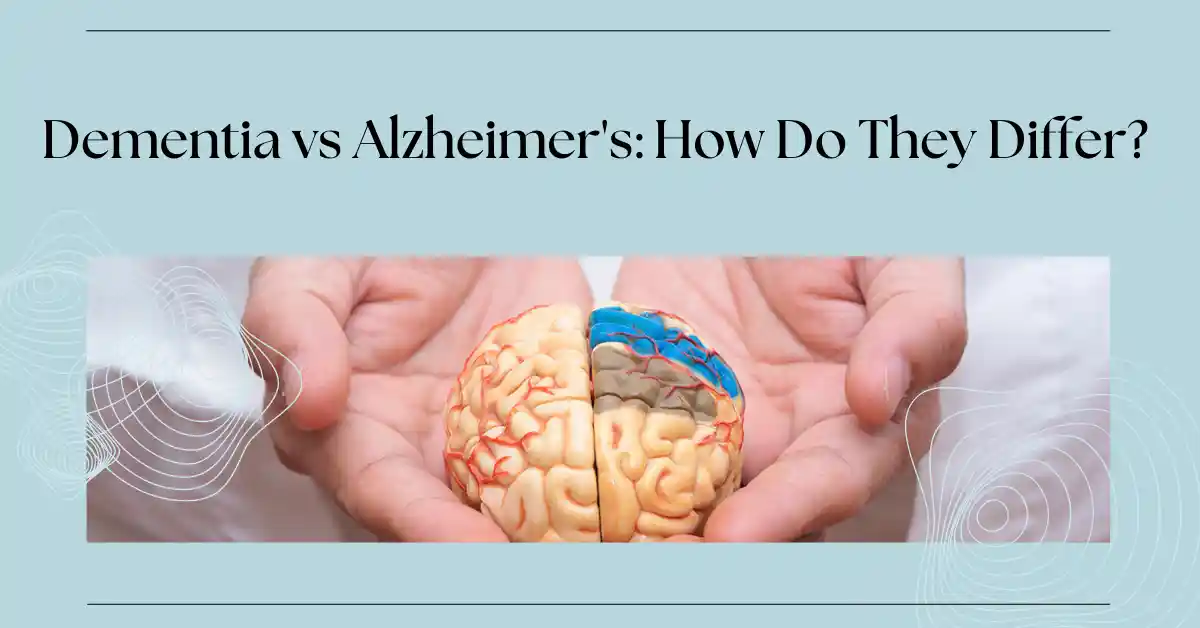Dementia vs Alzheimer’s: How Do They Differ?
Dementia and Alzheimer’s disease are terms that are commonly conflated. While they share several similarities, they are not interchangeable. Dementia refers to a group of symptoms affecting our cognitive and social abilities severely enough to inhibit daily functioning, while Alzheimer’s is the most common cause of dementia. Here we unravel the complexities of these two illnesses, demarcating their distinct characteristics and shedding light on their often misunderstood relationship. This article hopes to clarify the differences between dementia and Alzheimer’s offering a deeper understanding of these complex conditions.
Understanding Dementia

When comparing dementia vs Alzheimer’s, let’s start by discussing dementia. Dementia is a general term for a cluster of symptoms correlated with declining memory, reasoning, and cognitive abilities. It is a syndrome, not a disease, as multiple illnesses can lead to dementia. You need to understand that dementia is symptomatic of several underlying diseases and conditions, primarily characterized by progressive cognitive and functional impairments. The symptoms experienced and their progression can vary, depending on the underlying cause.
The symptoms associated with dementia have substantial effects on day-to-day life, impacting communication, perceptions, and judgment. Individuals experiencing dementia may have difficulties with day-to-day tasks, experience problems with language, struggle to keep track of time and location, show poor judgment and increased confusion, and suffer personality changes. These symptoms have a large impact on the individual’s lifestyle and are severe enough that they impede daily functioning.
Types of dementia include vascular dementia, dementia with Lewy bodies, frontotemporal dementia, and Alzheimer’s disease. Each type of dementia may have distinct symptoms or symptom progressions, which manifest due to different disease processes (e.g., strokes in vascular dementia).
Exploring Alzheimer’s Disease
The term Alzheimer’s disease is often used interchangeably with dementia, creating a misunderstanding that they are one and the same. Alzheimer’s disease is actually one specific type of dementia. In fact, Alzheimer’s disease accounts for 60 to 80 percent of cases of dementia. It’s characterized by issues with memory, thinking, and behavior, with symptoms increasing over time and eventually becoming severe enough to interfere with daily tasks.
Understanding Alzheimer’s disease begins with looking at the human brain. In Alzheimer’s, the brain is damaged by the formation of plaques and tangles, abnormal structures that can lead to the death of brain cells. While the exact cause of Alzheimer’s disease is not yet fully known, it is believed to be a combination of genetic, lifestyle, and environmental factors. As the disease progresses, it leads to worsening symptoms and brain damage.
The progression of Alzheimer’s can vary from person to person, but the disease ultimately leads to an inability to engage in conversation and respond to the environment. The most well-known symptom is memory loss, typically affecting the ability to recall recent events. As Alzheimer’s advances through the brain, memory problems get worse, together with other symptoms such as disorientation, mood and behavior changes, deepening confusion, and difficulty speaking, swallowing, and walking. Take the time to look into resources available for patients and their families if you want to learn more.
Diagnosing Dementia and Alzheimer’s

Diagnosing either dementia or Alzheimer’s requires a comprehensive evaluation, often involving multiple medical professionals. An accurate diagnosis is crucial, as the treatment and prognosis differ depending on the underlying cause of dementia. The evaluation involves a thorough review of the individual’s medical history, physical and neurological examinations, cognitive and neuropsychological tests, and sometimes brain imaging and blood tests.
A diagnosis of dementia requires signs of cognitive impairment that affects daily living. Generally, the physician will examine memory, attention, language, and problem-solving capabilities. These evaluations can identify what type of dementia a person is experiencing, and whether Alzheimer’s disease is the cause. In many cases, the precise type of dementia cannot be confirmed until after the person has passed away, upon conducting a post-mortem brain examination.
Unlike dementia, diagnosing Alzheimer’s is a process of elimination. Physicians will rule out other potential causes and then, based on symptoms and cognitive testing, they may judge a person to likely have Alzheimer’s disease. However, the only conclusive way to determine whether a person had Alzheimer’s disease is through an autopsy after death.
Treating Dementia and Alzheimer’s
Treatment for dementia depends largely on its cause. In some instances (such as cases due to vitamin deficiencies or thyroid problems), treating the underlying cause can reverse dementia. When dementia is caused by a disease like Alzheimer’s, treatment can be more complex. Currently, there is no cure for Alzheimer’s disease or a way to stop its progression. Therapies can temporarily slow the worsening of dementia symptoms and improve the quality of life for those with Alzheimer’s and their caregivers.
Dementia treatments aim to alleviate the symptoms. This may involve using medications to slow the rate of cognitive decline, managing behavior, and focusing on helping the person and their family to manage day-to-day challenges, improve quality of life, and maximize independent function for as long as possible. Treating cardiovascular disease risk factors (e.g., high blood pressure, diabetes) can protect brain health and prevent further brain damage, which can slow cognitive decline in dementia.
Alzheimer’s disease management is based on comfort care, enhancing the person’s quality of life and dignity. This includes supporting the individual in performing everyday tasks, behavioral therapies to manage new or challenging behaviors, and medications for memory loss or other symptoms associated with the disease. Ultimately, the goal is to maintain mental function, manage behavioral symptoms, and slow or delay the symptoms of the disease.
Lifestyle Changes and Disease Management
Lifestyle modifications can play a key role in managing both diseases. Experts suggest that a heart-healthy diet, regular physical activity, social engagement, mental stimulation, and a regimented sleep schedule can all manage symptoms of dementia and Alzheimer’s. For example, cognitive stimulation therapies, which involve taking part in group activities and exercises designed to improve memory and problem-solving skills, may benefit people with dementia or Alzheimer’s disease.
Moreover, controlling risk factors for cardiovascular diseases, such as quitting smoking, treating high blood pressure and other cardiovascular conditions, regular exercise, maintaining a healthy weight, eating a healthy diet, and controlling blood sugar levels can slow the progression of dementia, especially when it co-occurs with Alzheimer’s disease.
Ensuring a safe and supportive environment, establishing a daily routine, simplifying tasks, promoting rest, playing relaxing games like Klondike Solitaire, and fostering social interaction are useful strategies for managing the daily challenges of both diseases. These measures can lessen the burden on both the individual with the disease and their caregivers, promoting a better quality of life.
Support for Caregivers

Supporting a loved one with dementia or Alzheimer’s disease can be physically and emotionally taxing. Caregivers often feel overwhelmed and may experience high levels of stress and mental health problems, like depression. However, there are strategies caregivers can employ, and support available that can make what is a challenging journey more manageable.
Caregivers require support and assistance to navigate the challenges associated with dementia and Alzheimer’s care. It can be useful to join support groups, seek respite care, and enlist help from friends and family. Respite care can provide caregivers with a temporary rest from caregiving, while the person with Alzheimer’s continues to receive care in a safe environment.
Training in dementia care, adoption of coping strategies, and learning to manage caregiver stress can significantly improve the lives of caregivers, fostering a better understanding of how to manage the symptoms and behavior of a person with dementia or Alzheimer’s. In essence, while caring for someone with dementia or Alzheimer’s can be overwhelming, the right tools and support can make it a journey of love and compassion.
While the terms dementia and Alzheimer’s are often used interchangeably in common discourse, they represent distinct realities. To highlight, dementia is a syndrome, representing a group of symptoms that affect mental cognitive tasks such as memory and reasoning. Alzheimer’s, on the other hand, is a specific degenerative brain disease that leads to dementia. Given the high prevalence of both conditions in our aging society, it is essential that we dispel misunderstandings, improve awareness, and foster understanding toward ensuring better care and support for our loved ones living with these challenging conditions.







